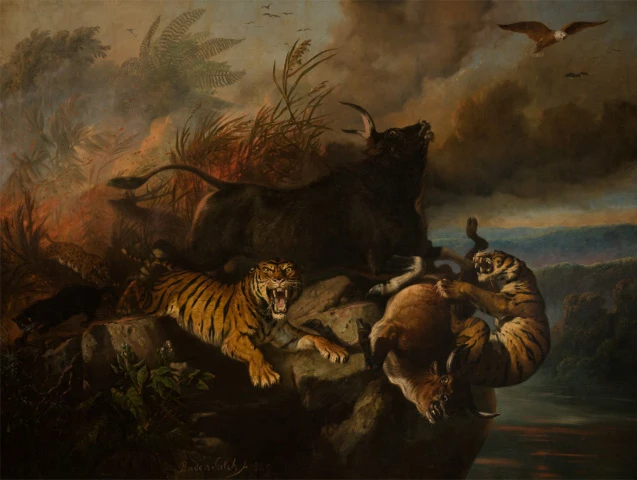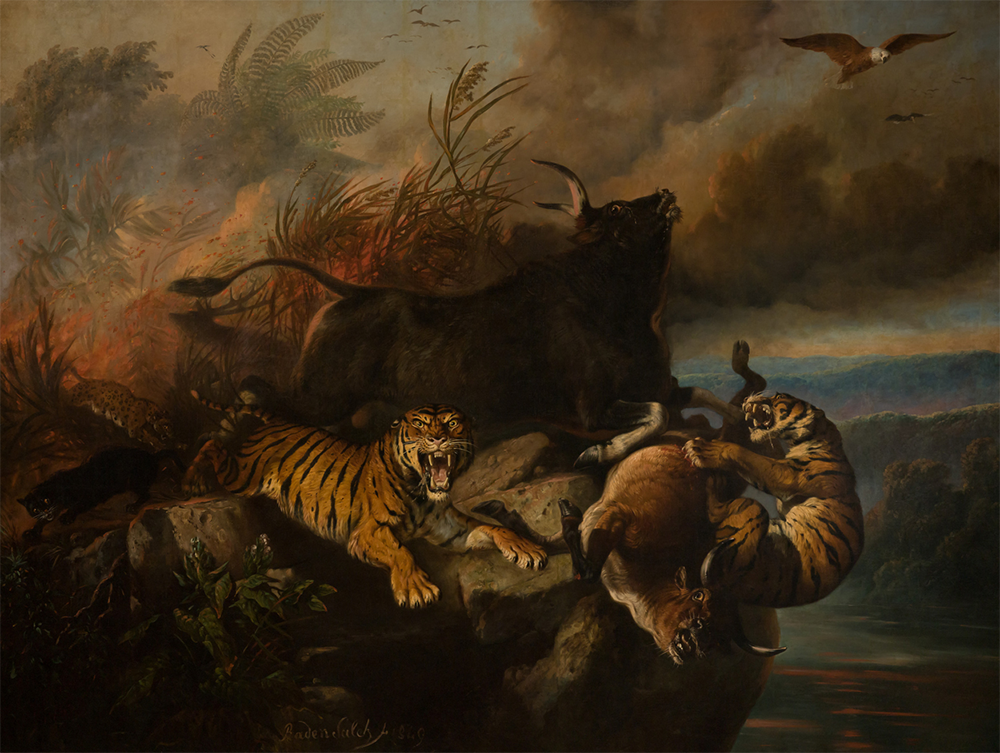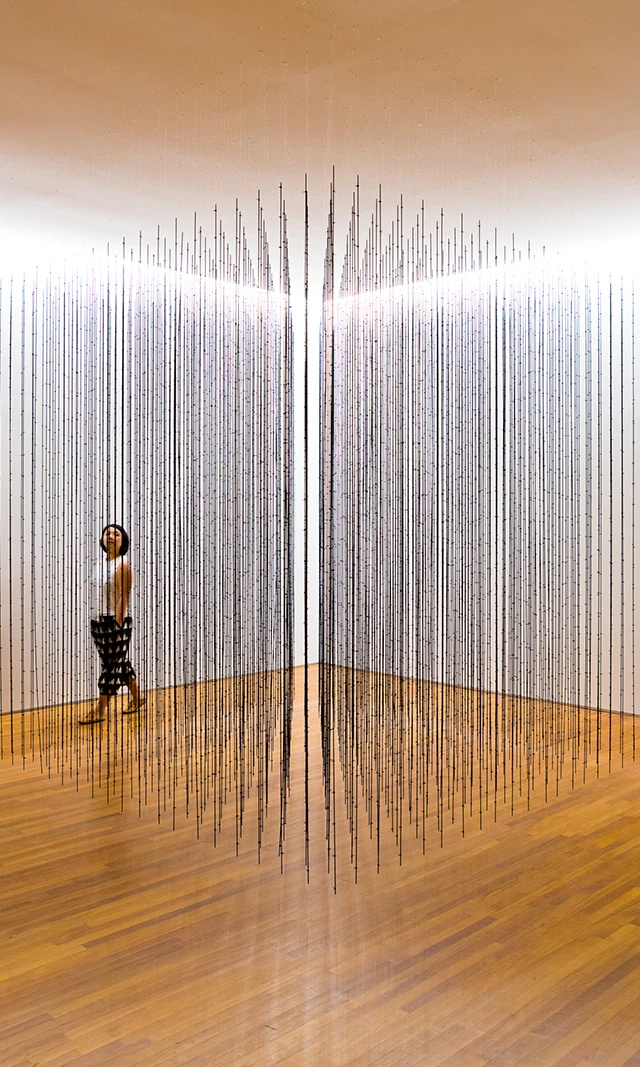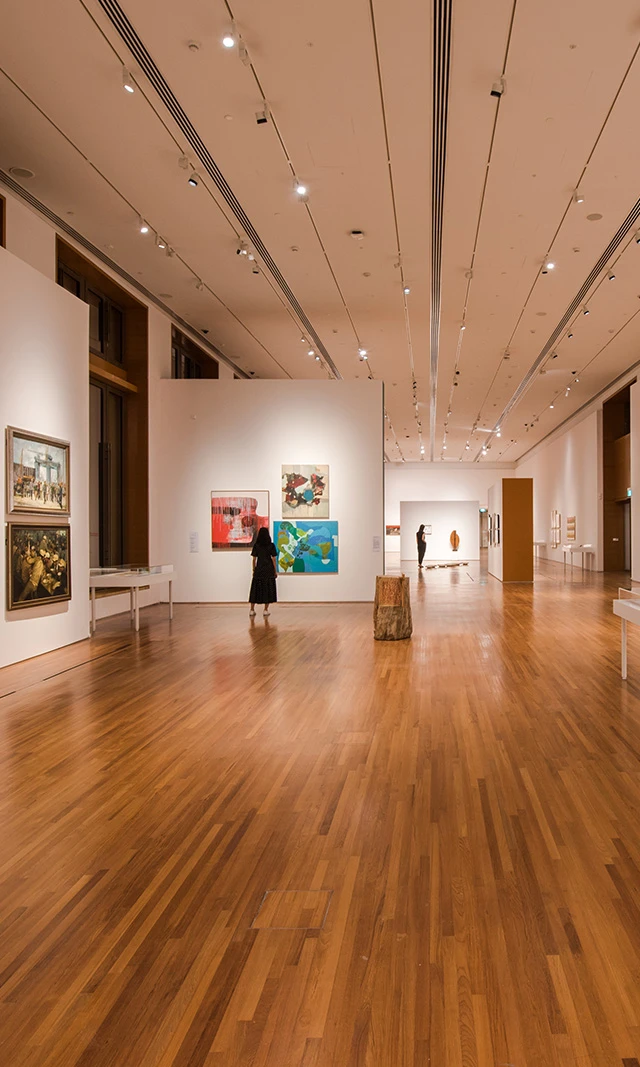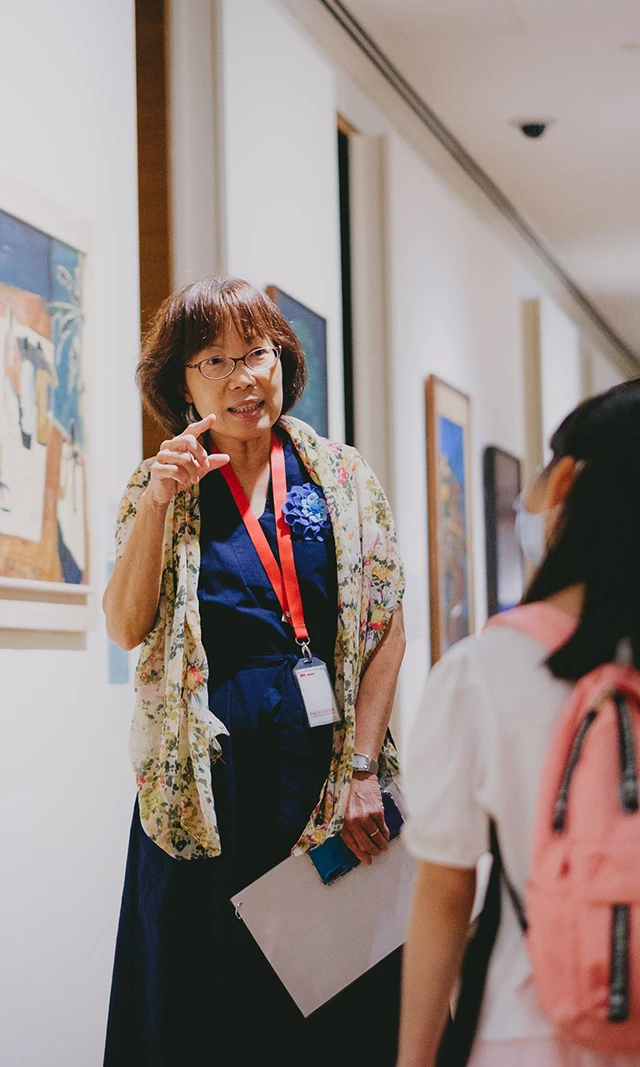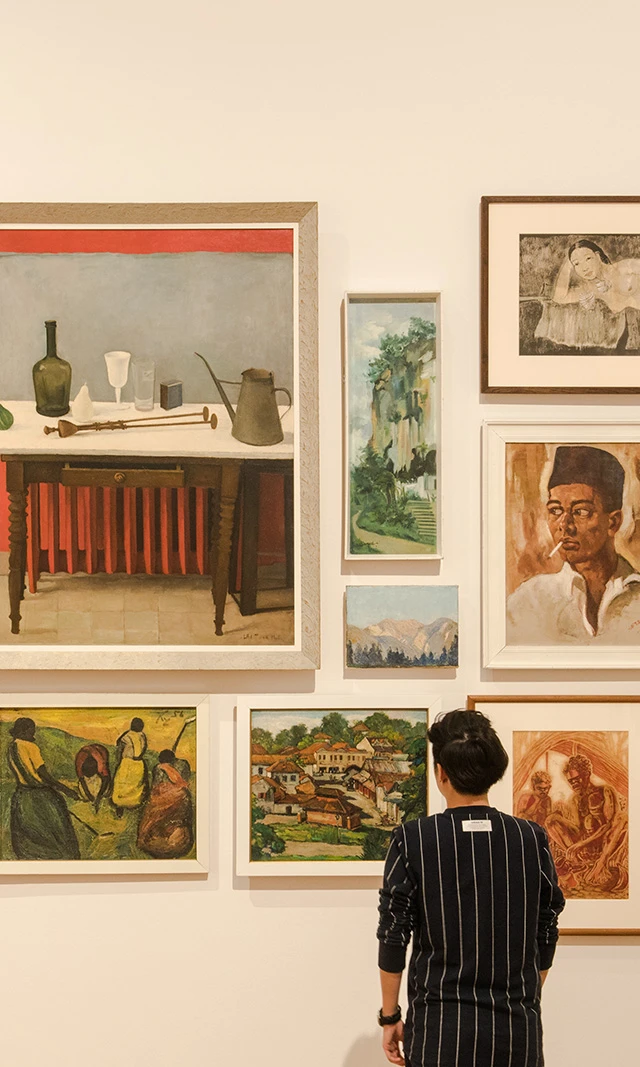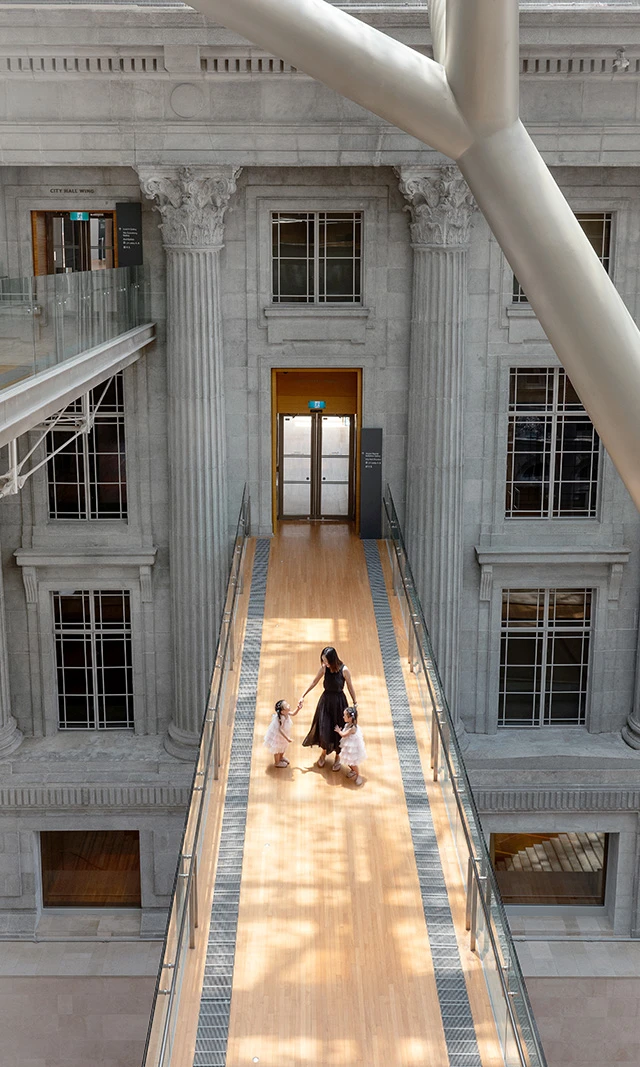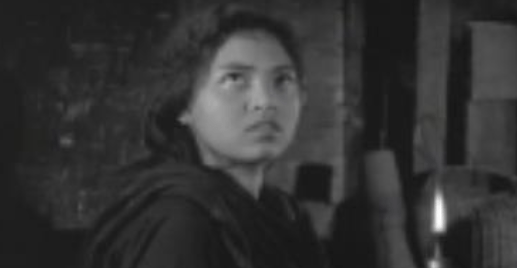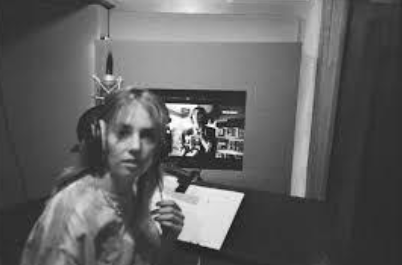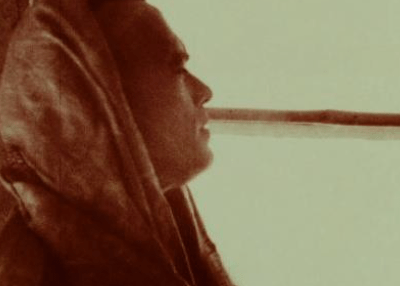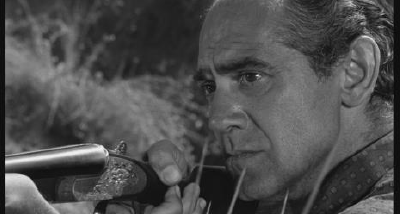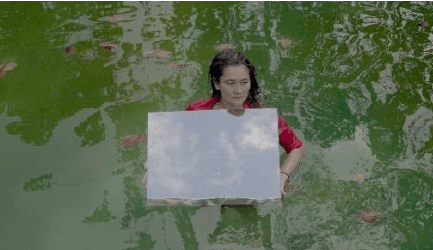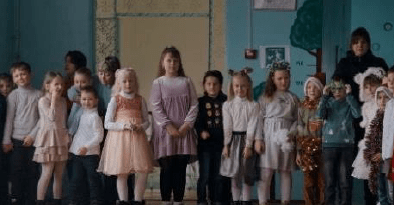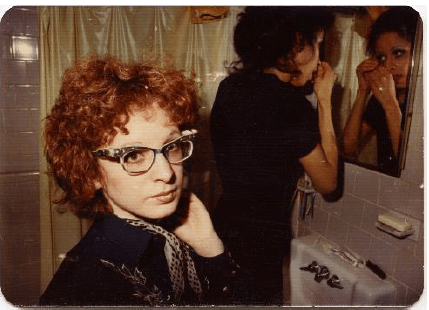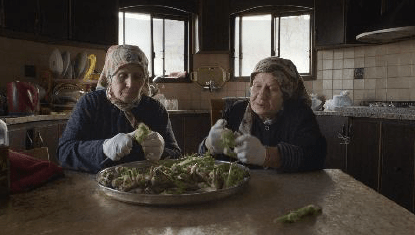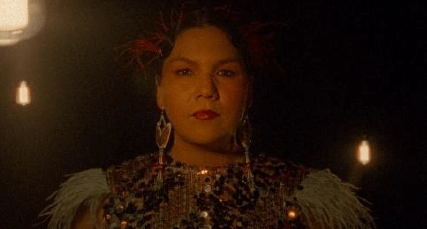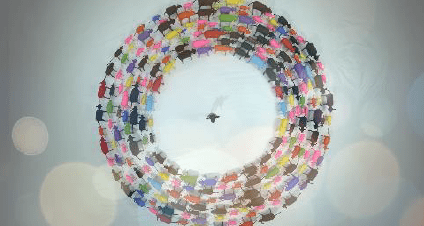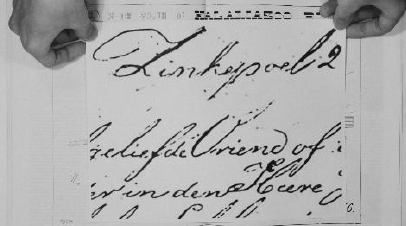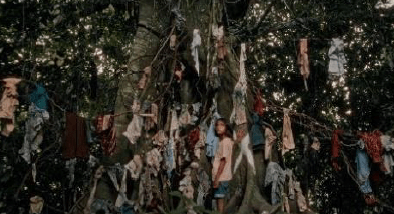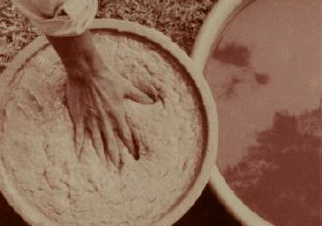Painting with Light returns with cinematic works that inspire reflection and dialogue
The festival returns this September for 11 days of films that explore art, culture, and the social issues of their time that continue to resonate today
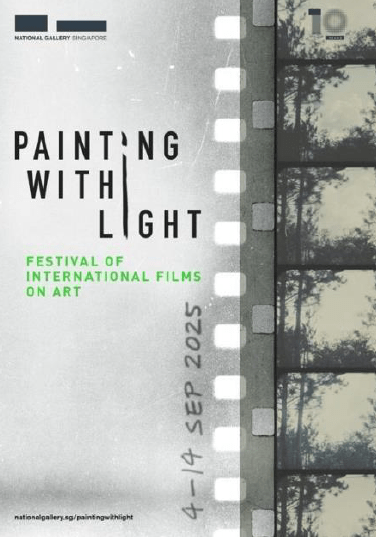
SINGAPORE, 19 August 2025 – Painting with Light returns to National Gallery Singapore for its sixth edition, spotlighting filmmakers exploring art, culture, and works that address the urgent social issues of their time. The festival runs from 4 to 14 September 2025, and presents over 45 feature-length and short films from Singapore, Southeast Asia, and around the world, inviting audiences to see art in new ways through the lens of film.
Launched in 2017, Painting with Light is the Gallery’s signature film festival dedicated to international films on art. Each edition brings together artist films, films on art, arthouse cinema, and restored classics in a thoughtfully curated programme, offering multiple entry points for audiences of all backgrounds to engage with black box screenings and beyond in meaningful and accessible ways.
Organised across eight sections, this year’s festival features a variety of genres that capture the social concerns of the filmmakers’ time, inviting reflection and dialogue on issues that transcend borders and remain powerfully relevant today. Among these genres are artist films, arthouse cinema, documentaries on art, and works newly commissioned and restored by the Gallery. Highlights include Lav Diaz’s epic Magellan (2025), the world premiere of Virgilio “Pandy” Aviado’s restored experimental film 1978 Footages (1978), and Kateryna Gornostai’s mosaic-like documentary Timestamp (2025). Audiences will also have the rare opportunity to engage with filmmakers, artists, and the Gallery’s curators, as well as specially curated exhibition tours. From 5 September 2025, festival goers can, for the first time, enjoy a dedicated Festival Lounge where they can connect with fellow film lovers and industry professionals over free film screenings.
Dr. Seng Yu Jin, Senior Curator and Director, Curatorial, Research & Exhibitions at National Gallery Singapore, says, “We’re thrilled to welcome audiences back for another edition of Painting with Light. This year’s festival continues the Gallery’s mission to reimagine Southeast Asian art by exploring the many ways film can spark fresh perspectives on the region and the world. Our line-up features outstanding works by regional filmmakers that draw on Southeast Asia’s art history and reflect on the social and political issues shaping our time. From thought-provoking feature films to innovative short works and free screenings throughout the Gallery, Painting with Light offers something for everyone. We invite audiences to discover the moving image as an inspiring, accessible and powerful way to reflect on our shared experiences and connect with each other.”
Festival to open with Lav Diaz’s new film, Magellan
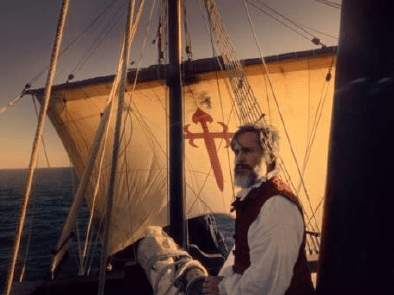
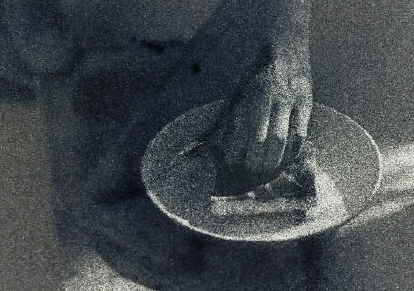
Two unmissable events anchor this year’s Painting with Light, reflecting a strong dedication to telling stories with universal themes that address social issues shaping the region today – through the voices of Southeast Asian filmmakers.
Opening the festival is Magellan (2025) by Lav Diaz, acclaimed Filipino filmmaker and one of Southeast Asia’s most remarkable auteurs, fresh from its world premiere at this year’s Cannes Film Festival. In this reimagining, Diaz retraces the personal journey of the titular Portuguese explorer, prompting audiences to question long-held narratives about this historical figure, as well as the myth of civilisation that fuelled colonial ambition. In doing so, the film invites audiences to confront the enduring legacies of conquest and resistance that still echo across our world.
The festival closes on an innovative note with We Are Toast (2025), an interdisciplinary live cinema performance by Singaporean artist duo Mark Chua and Lam Li Shuen. They combine multiple 16mm projectors and film loops hand-treated with coffee, pandan leaves, and coconut milk with a live soundscape to push beyond the traditional boundaries of filmmaking. Rooted in the artists’ reflections on contemporary Singapore, the work deconstructs the image of the kaya toast to unpack layers of culture and identity, opening space for audiences to consider how these social realities continue to evolve and resonate across borders.
Creating space for dialogue with poignant stories from Southeast Asia and the world
This year’s Painting with Light focuses on stories from Southeast Asia and beyond that resonate across cultures, exploring questions and concerns that remain relevant today. From intimate portraits to sweeping epics, the festival opens conversations that bridge perspectives, spark curiosity, and offer new ways of seeing our shifting world. Its selection of films also highlights how art can powerfully express complex and often challenging social issues, embrace experimentation in cinematic form, and provide a platform for voices not traditionally represented in film.
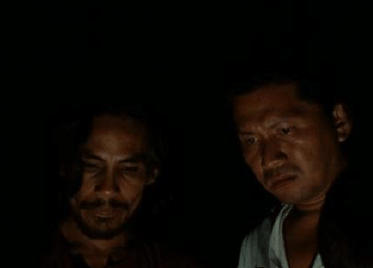
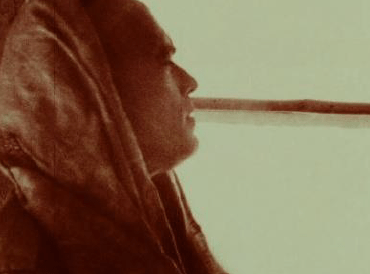
Spotlighting film as a vital art form and way of expression, the Artist Films section presents a feature-length independently made artist film and a rare anthology of bold short experimental documentaries from the 1960s to 1970s made by Southeast Asian artists. The Gallery commissioned the 2K digital restoration of Damortis (1986), a 16mm full-length film made independently by Philippine artist Briccio Santos during the Marcos regime, which provides an unflinching statement on corruption and material wealth through a story of faith healers. As part of the anthology on documentaries is 1978 Footages (1978) by Virgilio “Pandy” Aviado, which captures the friendship and collaboration between himself and Michael Parsons, two pioneers in Philippine experimental filmmaking. Both works were restored in collaboration with award-winning Italian film laboratory L'Immagine Ritrovata and will make their world premiere at the festival.
In the Art History, Co-authored section, lesser-known films from Southeast Asia are presented as critical contributions to art and film history. Highlights include Turang (1957) by Bachtiar Siagian, a post-independence Indonesian classic long believed lost that features the nationalist
struggle against Dutch colonial rule – making its Singapore premiere at the festival, followed by a post-screening dialogue with the director’s daughter, Bunga Siagian.
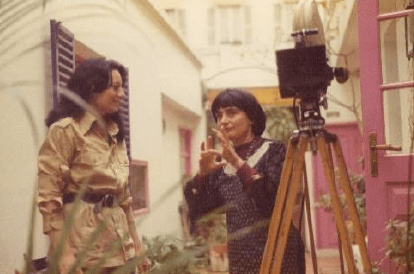
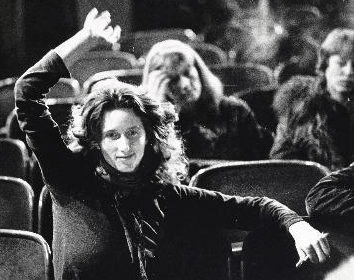
This section also honours pioneering women in cinema, with Women Are Naturally Creative—Agnès Varda (1977) by Katja Raganelli that offers a rare portrait of the filmmaker Agnès Varda and reveals her approach to filmmaking and candid reflections on female directors in a male-dominated industry. Paired with this is The Long Road to the Director's Chair (2025) by Vibeke Løkkeberg, which revisits the first International Women’s Film Seminar in 1973. For cinephiles, Videoheaven (2025) by Alex Ross Perry offers a nostalgic look at the rise and fall of the video store that shaped film culture and redefined the way we interacted with movies and each other.
This year’s Special Focus programme shines a light on the work of women filmmakers and artists whose works highlight contemporary struggles, from conflict and displacement to social change. Queen’s Palace (2024) by Burmese filmmaker Snow Hnin Ei Hlaing documents the lives of women activists and artists from Myanmar seeking refuge in Mae Sot, Thailand as they navigate displacement and psychological distress. Timestamp (2025) by Kateryna Gornostai captures the resilience of Ukrainian children and teachers living in a constant state of emergency as the country defends itself in war. Laura Poitras’ All the Beauty and the Bloodshed (2022) offers an intimate portrait of photographer Nan Goldin, weaving together her groundbreaking art and activism against the opioid crisis. Agnès Varda’s classic The Gleaners and I (2000) and Palestinian artist Jumana Manna’s Foragers (2022) explore sustainability, survival, and collective memory through everyday practices. Bold, innovative, and profoundly relevant, these films ask a central question: what does it mean to be human?
This year’s festival also includes Southeast Asian Shorts, a free daily drop-in screening programme co-curated with guest programmer Viknesh Kobinathan – named one of Screen International’s Future Leaders in programming and curation, a distinction that recognises rising talents shaping the global film and media landscape. Showcasing short films from the region, this series amplifies emerging and innovative storytelling, reflecting the Gallery’s aim to expand art discourse through inventive and thought-provoking practices. Admission is free for Singaporeans and Permanent Residents (PRs).
Enhanced museum experiences through film
Through Painting with Light, the Gallery transforms into a vibrant hub for film lovers, a space where audiences can explore bold ideas, discover fresh perspectives, and connect with others on the social topics and discussions that have been addressed in the films.
For the first time, Painting with Light introduces a dedicated Festival Lounge, at The Ngee Ann Kongsi Auditorium Foyer – a welcoming space to relax and continue conversations sparked by the screenings. Throughout the day at the lounge, audiences can enjoy screenings from Movement Pieces, a free series of short films that tell the meaning behind their stories entirely without words, only using movement, rhythm and gesture. This invites audiences to slow down, observe, and appreciate the artistry of film in a new way. Light refreshments will also be available for purchase in the Lounge.
This year’s Movement Pieces programme is curated by guest programmer Philippe U. del Drago, Executive and Artistic Director of the International Festival of Films on Art (FIFA) in Montreal since 2018. He will also join audiences for a Q&A during the festival.
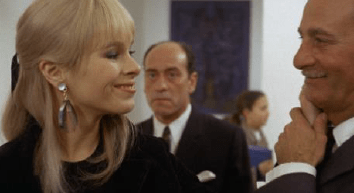

Exhibition Readings also returns this year, linking films directly to exhibitions in the Gallery to deepen the connections between art on screen and art on display. Responding to Fernando Zóbel: Order is Essential, the festival will screen two classics by Spanish auteur Carlos Saura – La Caza (1966) and Peppermint Frappé (1967) – which offer a cinematic lens into the political tensions of Franco-era Spain, the same era in which Zóbel established his museum of Spanish abstract art. Also featured are Air Mata di Kuala Lumpur (2025), a poetic homage to P. Ramlee, and Home to He(art) (2025), a documentary on Singapore artist Chen Wen Hsi and efforts to preserve his murals at 5 Kingsmead Road. Both films echo the themes explored in the Gallery’s long-term exhibition Singapore Stories: Pathways and Detours in Art, on view in the DBS Singapore Gallery.
All films will be screened onsite at the Gallery, with both free and ticketed programmes available. Tickets can be purchased via the festival’s microsite on National Gallery’s website here. More information about Painting with Light, including the full programme and admission details, can be found in the attached annexes or on the festival microsite.
Media assets are available through this link.
Annex A: Painting with Light Festival Sections and Key Films
Annex B: Painting with Light Film Screening Schedule
– END –
Annex A: Painting with Light Festival Sections and Key Films
| OPENING FILM (PUBLIC SCREENING) | |
|---|---|
MAGELLAN (MAGALHÃES) By Lav Diaz Sat 6 Sep | 4.30pm | Ticketed Portugal, Spain, France, Philippines, Taiwan | In Portuguese, Spanish, Tagalog and French, with English subtitles | 2025 | 163 min 33 sec | R21 (Some Homosexual Content and Nudity) Singapore Premiere | Magellan is an intimate portrait of the 16th century Portuguese explorer, Ferdinand Magellan, starring Gael García Bernal in the titular role. Shot in the Philippines, Portugal, and Spain, the film revisits the events surrounding Magellan’s treacherous expedition to the Spice Islands (in present-day Indonesia), which led to his fall in the Philippines. The result of seven years of research by director Lav Diaz, Magellan re-examines prevailing narratives about this historical figure, as well as the myth of civilisation that fuelled the madness of colonial ambition. At 164 minutes, Magellan is the shortest of Diaz’s films, but it covers an extensive history—from the Capture of Malacca in 1511 by Portuguese conquistador Afonso de Albuquerque, to the Spanish defeat in the Battle of Mactan in the Philippines in 1521. The events in this decade of conquest and ruination unfold in scenes analogous to a series of painterly tableaux. Consequently, as the viewer is drawn into the world of the film through the action, the framing turns the gaze to its theatricality. This creates a critical distance and sense of agency for the viewer, as he observes this re-staging of the past. The film sets out its vantage point and sympathies at the start: an Indigenous community celebrates the impending arrival of the “white man,” but the viewer is soon met with bodies washed up ashore in “1511, Malacca.” Yet, it is García Bernal’s sensitive portrayal of Magellan that drives the psychological complexity of the film. Compelled by a lofty mission to discover a new passage through South America and circumnavigate the globe for the first time in history, Magellan eventually unravels and becomes obsessed with religious conversion when he reaches Cebu, first through persuasion, then by force. Unable to heed the pleas from even his priest, Magellan and his men become embroiled in violence that begets violence, which leads to an uprising that would forever change the fortunes of the region. Magellan had its world premiere at the 78th Cannes Film Festival (2025). |
ART HISTORY, CO-AUTHORED Films that explore seminal moments in art and film history. | |
TURANG By Bachtiar Siagian Sun 7 Sep | 4.30pm | Ticketed Indonesia | In Indonesian and Karo, with English subtitles | 1957 | 90 min 34 sec | PG13 (Some Violence) Singapore Premiere | Turang is one of several post-independence Indonesian films that feature the nationalist struggle against Dutch colonial rule. Set in a Karo community in North Sumatra, this film employs a neorealist aesthetic to show the pastoral beauty of Indigenous lands, artistic traditions, and way of life. In doing so, Siagian accentuates the local resistance efforts of ordinary villagers in the larger liberation movement and depicts events from their perspective. The story follows Rusli, a freedom fighter who is wounded by Dutch troops during a mission and forced to hide out in a village closely watched by the colonial forces and their informants. As he recovers under the care of the village chief and his daughter, Tipi, Rusli seeks to re-join his unit. This sparks off a chain of events that surfaces the bonds of loyalty between the villagers and freedom fighters, and the love between Tipi and Rusli. The Karo term of endearment that gives the film its name forms the refrain in the haunting songs that Tipi and the villagers sing throughout the film, as they express their kinship and solidarity. Turang won four awards at the Indonesian Film Festival in 1960, including Best Film. A vital part of Indonesia's film heritage, it was for many years believed to be lost. The version showing at Painting with Light was digitised from nitrate materials recently found at Gosfilmofond, the state film archive of Russia. It was first screened in 2024 at Seberaya village, where the film was shot. In 2025, Turang was part of the 54th International Film Festival Rotterdam’s programme commemorating the 70th anniversary of the Bandung Conference. The director’s daughter, Bunga Siagian, will be in attendance for a post-screening dialogue. Bunga is an artist, researcher, and cultural producer. Her current research and practice explore Indonesian leftists' internationalism and political-cinematic commitments during the decolonisation era in the 1950s and 1960s. |
WOMEN ARE NATURALLY CREATIVE—AGNÈS VARDA (LES FEMMES SONT DE NATURE CRÉATIVES —AGNÈS VARDA) By Katja Raganelli Tue 9 Sep | 8pm | Ticketed Germany | In French, with English subtitles | 1977 | 47 min 18 sec | NC16 (Some Nudity) Singapore Premiere | When Katja Raganelli asked Agnès Varda if she could make a documentary about her, the latter invited her to visit a shoot. Women Are Naturally Creative—Agnès Varda, Raganelli’s portrait of this revered forerunner of the French New Wave film movement, thus begins on the set of One Sings, the Other Doesn’t (1977). It then progresses to Varda’s home, offering a rare glimpse of her domestic life as she discusses her personal relationships, and existing body of work, such as La Pointe Courte (1954) and Cléo from 5 to 7 (1962). Filming Varda at work afforded much insight into her views about cinema, her improvisatory methods, and her refusal to keep a strict separation between professional and family life, in the service of realism. Unlike the customary practices on sets organised to serve male genius, “the mother of the Nouvelle Vague”, as Varda is affectionately known, actively collaborates with her cast and crew, many of them women. Varda introduces Nurith Aviv (who also appears in The Long Road to the Director’s Chair, the second film in this double bill programme) as the camerawoman. She also gives roles to her teenage daughter and four-year-old son, who later interrupts her interview with Raganelli to say goodnight. But despite the freedom with which Raganelli and Varda seem to be able to approach their films, both are no strangers to the discrimination levelled by a film industry that was stymied by a lack of trust in women filmmakers. Raganelli, who wrote a film script that was greenlit by a German broadcaster, was pushed by her producers to allow a man to direct it. Forced to pivot to television, she often had to fund her documentaries: as a case in point, this film was made on spec. In the film, Varda also states that the only way to make the independent feminist cinema she wanted was to produce and finance it herself. However, when asked if they could speak of female expressions in cinema, Varda expresses her hopeful view that the beginnings of a movement were taking shape: There are so many theoretical points of view from which to approach feminism that we can’t get into details. But I think all women who do something for women, and express themselves and find a creative identity—that’s the movement. |
THE LONG ROAD TO THE DIRECTOR'S CHAIR By Vibeke Løkkeberg Tue 9 Sep | 8pm | Ticketed Norway | In Norwegian, English and German, with English subtitles | 2025 | 70 min | NC16 (Some Nudity and Sexual References) Singapore Premiere | The first International Women's Film Seminar in 1973, organised by filmmakers Claudia von Alemann and Helke Sander, was an important milestone in the history of feminist filmmaking. Billed as a seminar due to funding requirements, it was essentially one of the earliest women’s film festivals, which provided a platform for women in film and television to gather, screen and discuss their work. Held in the Arsenal cinema in Berlin, the programme comprised 45 films from seven countries that covered topics like women in the workplace, representation of women in the media, abortion, sexuality, and gender roles, and the women’s liberation movements in Europe and the United States. Among the guests was Norwegian filmmaker Vibeke Løkkeberg, who came to present her film, Abortion (1971), and to document the event. She recorded the comings and goings in the cinema, heated discussions, and conversations with participants about the prejudices ingrained in the patriarchal structures within which they work. There were disagreements, but open and honest dialogue too, affirming a commitment to solidarity and collective action in addressing systemic challenges faced by women working in a male-dominated profession. The event was very much of its time. Issues addressed reflected the concerns of the “second wave” of feminism in the West in the 1960s and 1970s, which sought equality and greater personal freedoms for women. This was also a period that saw an acceleration in geopolitical tensions worldwide, triggered by flashpoints like the Vietnam War. This volatility reverberated in the field of cinema; the revolutionary approaches of the French New Wave film movement were especially influential. Despite the historic content, state-owned broadcaster NRK refused to broadcast Løkkeberg’s footage. As a result, the materials were shelved and thought to be lost for nearly 50 years, until they were unexpectedly re-discovered in the Norwegian National Library. Painstakingly restored, the 16mm reels and audio recordings are now brought to life in The Long Road to the Director's Chair, which premiered at the 75th Berlin International Film Festival (2025). The film stands as a testament to the legacy of these women trailblazers, and their indomitable spirit that still echoes in the continued battle for gender equality and representation in the film industry today. |
VIDEOHEAVEN By Alex Ross Perry Fri, 5 Sep | 8pm | Ticketed USA | In English | 2025 | 172 min 2 sec | R21 (Sexual Scenes) Southeast Asian Premiere | For some forty years, from the late 1970s to the late 2010s, video stores were ubiquitous, vital spaces that shaped film culture, and re-defined the way we interacted with movies and each other. Today, video stores as physical spaces exist mainly in the past. For many, the only way to visit them now is through their onscreen depictions, commonly found in American films and television shows between the mid-1980s and the early 2010s. Alex Ross Perry’s Videoheaven retraces this history by thoughtfully piecing together footage of video stores from over a hundred titles—ranging from Hollywood blockbusters to low-budget B movies to arthouse films to television sitcoms—making it one of the most comprehensive surveys of this subject, expressed in the language of the medium itself. The film is inspired by Daniel Herbert’s book, Videoland: Movie Culture at the American Video Store (2014). More precisely, the idea for Videoheaven came from Perry’s discussions with Herbert about making a documentary that expands on his unpublished writing about depictions of video stores onscreen. Structured in seven parts, the first half of the film reflects Herbert’s approach as an academic, and presents a largely empirical history of the industry. The viewer is introduced to how the earliest video stores flourished as one-of-a-kind, independent establishments in the 1980s with their idiosyncratic selections, but were overtaken by corporate retail chains with mass-market, family-friendly collections in the 1990s. The arrival of DVD at the end of that decade is seen to shift the business to general retail stores like Walmart, before streaming services wiped out video rental or sales in the early 2010s. In the second half, the film strikes a more contemplative note as Perry, after a decade of studying the footage, offers his observations about why people eventually turned their backs on video stores, even when they were such a part of daily life. He attributes it to changing technology, but also examines the role of Hollywood in laying the groundwork for their disappearance. A labour of love ten years in the making, this essay film in which Maya Hawke narrates the story of an industry's meteoric rise and fall, is a visual record of an important chapter in cinema and American society, and a must watch for the avid cinephile. |
ARTIST FILMS Presenting films made by artists, this year includes an emphasis on early documentaries by Southeast Asian practitioners and a full-length movie independently made during the Marcos regime in the Philippines. | |
1978 FOOTAGES By Virgilio “Pandy” Aviado Sat 13 Sep | 8pm | Ticketed Philippines | Silent | 1978 | 14 min | Colour 16mm transferred to 4K digital video | PG Newly restored by National Gallery Singapore, 2025. World Premiere This silent film will be accompanied by music selected by the artist. | This film captures the friendship, collaboration, and shared adventurous spirit between two pioneers in Philippine experimental filmmaking. After returning from Europe in 1977, Virgilio Aviado's vision found a crucial collaborator in veteran actor and producer Michael “Mike” Parsons. Their partnership led to "The Monastery," an art workshop in Baguio, which soon became a crucible for their joint creative endeavours. Significant arrivals from Japan—an etching press and a brand new 16mm SLR Canon Scoopic—further solidified their multimedia aspirations. Early test footage from the Canon Scoopic reveals intimate moments at their Baguio studio and Parsons' playful spontaneity, alongside footage from their trip to a Visayas island. What truly stands out is Aviado’s audacious experimentation: he manipulated frame rates, executed dissolves and stop motion, crafted intricate vignettes, and pioneered film-to-video transfers and back to film. The 1978 footages are a powerful testament to the free-spirited artistic inquiry that characterized early Philippine experimental cinema. It is currently the sole known remaining photochemical film by Aviado, solidifying his legacy as a pioneer of Philippine experimental filmmaking. Recognising its historical and artistic value, the National Gallery Singapore has commissioned the 4K digital restoration of this newfound film. L’Immagine Ritrovata carried out the restoration while respecting the artist’s wishes to reflect the age of the film. The filmmaker will be present for a post-screening dialogue. This film is screening as part of the anthology Through Artists’ Eyes: Southeast Asian Documentaries. |
DAMORTIS By Briccio Santos Fri 12 Sep | 8pm | Ticketed Sat 13 Sep | 2pm | Ticketed Philippines | In Filipino, with English subtitles | 1986 | 98 min 18 sec | Colour 16mm film digitally restored | M18 (Sexual Violence and Sexual Scenes) Newly restored by National Gallery Singapore, 2025. World Premiere | A haunting meditation on faith, power, and the human cost of divinity, Damortis, originally shot on 16mm film, is a landmark of Philippine independent cinema. In the remote northern Philippine town of Damortis, Miguel, a former seminarian, stumbles upon a mysterious gift—he can heal. Together with his wife, Anna, he establishes a profitable faith-healing practice. As crowds grow and offerings pour in, the couple’s fortunes rise. But as their influence grows, so do the trappings of success. Lando, Miguel’s childhood friend whom he has taken under his wing, inherits Miguel’s healing powers and quickly eclipses him in both ability and charisma. Caught between grief and disillusionment, Anna watches the world unravel to a climax. Damortis weaves together religious symbolism, intense ritual imagery, and psychological tension. With striking use of colour and a hypnotic narrative rhythm, the film explores themes of faith, power, and moral collapse. The film is both an atmospheric cautionary tale and a critique of how spiritual authority can be corrupted by human desire. Featuring performances by actress Madeleine Nicolas, painter Lito Carating and installation artist Roberto Villanueva, Santos shot the film in 1982 with borrowed equipment and the participation of the local townspeople. Damortis screened at a few venues in Manila and abroad, including the Mannheim International Film Festival in Germany (1987) and the Asian-American Film Festival in New York, United States (1988). In 2025, National Gallery Singapore commissioned the 2K digital restoration of the film, carried out by L’Immagine Ritrovata. The filmmaker will be present for a conversation following each screening. |
EXHIBITION READINGS Film programmes that are conceived in response to the art in the Gallery’s ongoing exhibitions. | |
LA CAZA (THE HUNT) By Carlos Saura Mon 8 Sep | 8pm | Ticketed Spain | In Spanish, with English subtitles | 1966 | 83 min 34 sec | PG (Some Violence) | Simmering tension underpins this film of men on a rabbit hunt. This film by acclaimed Spanish filmmaker Carlos Saura was his first international breakthrough. In La Caza, three men prey upon rabbits during a hot day. The heat, guns, adrenaline, veiled memories, and underlying grudges densely accumulate to create a strained atmosphere. Confrontation seems inevitable. La Caza is a political allegory of Franco-era Spain with its tense ambiance on the brink of explosion. The film won the Silver Bear for Best Director at the Berlinale in 1967, catapulting Saura into global fame. La Caza, together with Saura’s Peppermint Frappé, is programmed in response to the Gallery’s exhibition Fernando Zóbel: Order is Essential. Carlos Saura is featured in the Zóbel exhibition with his first film, Cuenca (1958), a documentary on the Spanish town where Zóbel lived and established the Museo de Arte Abstracto Español with his collection in 1966. |
PEPPERMINT FRAPPÉ By Carlos Saura Thu 11 Sep | 8pm | Ticketed Spain | In Spanish, with English subtitles | 1967 | 89 min 54 sec | PG13 (Some Drug References) | Winning the Silver Bear for Best Direction at Berlinale in 1968 for this film, Carlos Saura directs this psychological thriller of infatuation and obsession. Julian, a middle-aged single doctor, meets his childhood friend Pablo. The latter is back from Africa and has just married a beautiful young blonde, Elena. Julian falls in love with her and tries to seduce her, but she mockingly pushes him away. He then finds that Ana, his nurse, bears an uncanny resemblance to Elena. He gradually transforms the compliant Ana into the object of his desire. Peppermint Frappé covertly alludes to Franco-era Spain with its atmosphere of repression which ultimately leads to violent acts. It is Saura’s first colour feature-length film and his first collaboration with actress Geraldine Chaplin, who plays both the glamorous, confident Elena and the meek, submissive Ana. Peppermint Frappé, together with Saura’s arguably most well-known film The Hunt (La Caza), is programmed in response to the Gallery’s exhibition Fernando Zóbel: Order is Essential. Carlos Saura is featured in the Zóbel exhibition with his first film, Cuenca (1958), a documentary on the Spanish town where Zóbel lived and established the Museo de Arte Abstracto Español with his collection. Peppermint Frappé includes a scene shot at this museum. |
AIR MATA DI KUALA LUMPUR (TEARS IN KUALA LUMPUR) By Ridhwan Saidi Sat 6 Sep | 2pm | Ticketed Malaysia | In Malay, Cantonese, Mandarin and English, with English subtitles | 2025 | 94 min 59 sec | M18 (Nudity) Southeast Asian Premiere | “Air mata di Kuala Lumpur” was the last song written by P. Ramlee, the renowned actor, director, singer, and composer who made over 60 films in Singapore and Malaysia from the 1950s to the 1970s. He had intended this song for a film with the same title, but passed away before the film was made. It would have been the Malay star’s first colour film. By choosing to name his film after P. Ramlee’s unfinished one, Ridhwan Saidi gestures to an absence, but also seeks to redeem what could have been with a vision of what is. In Saidi’s film, present-day Kuala Lumpur is an ever-evolving city with inhabitants who find meaning in artistic endeavour, while caught up between loss and longing. In the soundtrack and mise-en-scene, fragments from P. Ramlee's body of work punctuate this homage to his enduring legacy. The narrative is made up of a series of events associated with two women. Tze, a car workshop owner grappling with the disappearance of her husband, seeks solace in a performance workshop. Jay, a photographer preparing for an exhibition, converses with strangers in the city to escape from the familiar. As their paths converge, they find a serendipitous connection that changes their personal trajectories. The director Ridhwan Saidi, and co-producers Nurul Aizam and Tan Cher Kian, will be in attendance for a post-screening dialogue. |
HOME TO HE(ART) By Gözde Zehnder and Russel Zehnder Gozde Sun 7 Sep | 2pm | Ticketed Singapore | In English and Mandarin, with English subtitles | 2025 | 66 min 1 sec | PG World Premiere | Home to He(art) offers a glimpse of how Singapore artist Chen Wen Hsi (b. 1906, China; d. 1991, Singapore) had lived and worked in his last place of residence at 5 Kingsmead Road, with a focus on the two murals he painted between 1959 to 1964. Entitled Studio I and Studio II, these abstract murals reflect the influence of Cubist art but also exemplifies Chen’s inclination to incorporate Nanyang subject matter into his compositions. As art historian Low Sze Wee points out, these works must have held personal significance, inscribed as they were in an intimate, domestic space Chen would encounter daily. Given that he made many of his works at home, and drew inspiration from the natural environment around him, the film also looks at the grounds of his estate, namely a garden adjacent to his studio where he kept a small menagerie of animals, including a gibbon that inspired his paintings on the subject. Besides archival footage, the film features first-hand accounts from his former neighbours, friends and students who had visited him at home, such as local artists Ho Chee Lick, Goh Beng Kwan, and Chua Soo Bin. What the film also brings to light is the extraordinary dedication of those who committed themselves to the preservation of the historic murals. It presents behind-the-scenes documentation of this extended journey taken by conservators, architects, engineers, and builders, along with the current homeowner, passionate about doing all they can to safeguard and share Chen’s art with the world. As a team, they embarked on a complex project, which involved extracting the mural wall, relocating it to a storage facility, before re-installing it back on site, fully restored. But the ambitious undertaking faced numerous challenges. It required painstaking preparations, extensive safety precautions to protect the structural integrity of the wall (or risk shattering the murals) and dealing with disruptions caused by the COVID-19 pandemic. The completed project, and film, testifies to a remarkable shared response to a once-in-a-lifetime opportunity to contribute to the legacy of a pioneering figure in Singapore art history, for the good of generations to come. The directors and project team will be in attendance for a post-screening dialogue __________ This programme is conceived in conjunction with the exhibition, Singapore Stories: Pathways and Detours in Art, which presents a layered and ever-changing story of Singapore’s art history. Chen Wen Hsi’s Gibbons (1977) is one of the featured artworks currently on display. |
SPECIAL FOCUS This year’s programme features the work of women filmmakers and artists who advocate for an ethics of care. Bold, innovative, and profoundly relevant, these films ask the enduring question at the heart of artistic endeavour: What does it mean to be human? | |
QUEEN’S PALACE By Snow Hnin Ei Hlaing Myanmar | In Burmese, with English subtitles | 2024 | 10 min 58 sec | Rating NC16 (Some Mature Content) Sat 13 Sep | 4.30pm | Ticketed Asian Premiere | Queen’s Palace portrays the experiences of a group of women activists and artists from Myanmar who have sought temporary asylum at a shelter in Mae Sot, a border town in Thailand. Having been profoundly affected by the military coup and subsequent protests in 2021, they fled their homes for safety but now find themselves in unfamiliar territory, waiting for permission to make the journey to yet another country for refuge. Filming with limited equipment, director Snow Hnin Ei Hlaing nonetheless manages to convey the complexity of the situation in which the women find themselves. Besides physical displacement, many struggle with psychological distress from intrusive memory flashbacks, survivor guilt, and a deep sense of abandonment. One woman asks, “What language should I speak so that the world hears us? I want to speak that language.” She learns to sing a Ukrainian folk song, and in doing so, performs an act of calling for aid, by association. The filmmaker will be in attendance for a post-screening dialogue. |
TIMESTAMP (STRICHKA CHASU) By Kateryna Gornostai Sat 13 Sep | 4.30pm | Ticketed Ukraine, Luxembourg, Netherlands and France | In Ukrainian, with English subtitles | 2025 | 125 min 22 sec | PG13 (Some Mature Content) Southeast Asian Premiere | In battlefield medicine, a timestamp is used to record the time that a tourniquet is applied on a limb, and thereby alerts medics to any prolonged use that would bring about permanent tissue damage. Quietly assertive, Kateryna Gornostai’s Timestamp chronicles the state of learning in school classrooms across Ukraine today, as the country defends itself in war. Rather than focusing on the actual combat, this observational documentary follows its relatively unseen impact on the daily lives of children and teachers at different educational levels—from kindergarten to high school—as they exist in a continuous state of emergency. Shot in 2023 and 2024, the vignettes of school life presented in the film unfold to form a mosaic of a larger collective reality. The children and teachers appear to be unfazed by the challenges posed by the fighting: they continue with online lessons amid building wreckage, and patiently bear with the constant interruptions from air raid sirens and national moments of silence alike. But every so often, real loss and emotional trauma become palpable. In one scene, a little girl heads into her school library, only to suddenly burst into tears when she sees a photograph of her father alongside those of other fallen soldiers. Yet minutes later, in the company of her teacher and classmates who immediately rush to comfort her, she manages to resume her composure, and her reading. It soon becomes evident that such empathy and resilience emanating from the stories constitute the essence of the film, speaking to the true mettle of a people who continue to transcend extraordinary circumstances. Timestamp was selected for the Competition section of the 75th Berlin International Film Festival (2025). |
ALL THE BEAUTY AND THE BLOODSHED By Laura Poitras Sat, 6 Sep | 8pm | Ticketed USA | In English | 2022 121 min 54 sec | R21 (Nudity and Sexual Scene) | One of the most important and influential artists of her generation, Nan Goldin has revolutionised the art of photography through her honest and deeply personal portraiture. Since the 1970s, her work has explored notions of gender and definitions of normality. By documenting her life and the lives of the friends around her, Goldin gives a voice and visibility to her communities. The images of her “extended family” became the subject of her seminal slideshow and first book, The Ballad of Sexual Dependency (1985). This work, along with The Other Side, Sisters, Saints and Sibyls, and Memory Lost, as well as the legacy of her late sister Barbara, frames All the Beauty and the Bloodshed, Laura Poitras’ moving portrait of Goldin’s life, practice and activism. Made in close collaboration with the artist, the documentary explores the inherently subversive quality of her art, seen especially in footage chronicling her responses to the HIV/AIDS and opioid crises. After her own ordeal with OxyContin addiction, Goldin founded P.A.I.N. (Prescription Addiction Intervention Now) in 2017. It is an organisation that advocates for harm reduction and overdose prevention, and seeks to hold the billionaire Sackler family accountable for manufacturing and marketing the highly addictive painkiller through their corporation Purdue Pharma. To call attention to their responsibility for the hundreds of thousands of deaths, all while being celebrated for their ample donations to the arts, P.A.I.N. staged several powerful actions at renowned museums that had accepted Sackler funds and named exhibition halls after them. Poitras made this film under the shadow of the COVID-19 pandemic, and took nearly two years to conduct a series of audio interviews with Goldin that often touched on very painful and intimate subjects—these would form the narrative backbone of her film. Weaving together stories from Goldin’s childhood, rebellious adolescence, and immersion in New York City’s thriving underground arts scene, All the Beauty and the Bloodshed captures a personal experience of historic moments. Most of all, it reveals the deep compassion of an artist compelled to end the stigmas carried by many marginalised communities. All the Beauty and the Bloodshed won the Golden Lion for Best Film at the 79th Venice International Film Festival (2022). |
THE GLEANERS AND I (LES GLANEURS ET LA GLANEUSE) By Agnès Varda Sun, 14 Sep | 2pm | Ticketed France | In French, with | A reflection on the humble act of gleaning, commonly illustrated by Jean-François Millet’s famous 1857 painting Les glaneuses (The Gleaners) in encyclopaedias, inspires director Agnès Varda to set out on a journey to document the stories of modern-day gleaners who forage for what mainstream society discards. Her chance encounters and conversations with these who live on the margins take her on a joyful adventure across France, from the markets of Paris to the Avignon countryside to the island of Noirmoutier. “Gleaning, that’s the old way,” declares one farmer, speaking of the practice as collective wisdom imparted from one generation to another. Elsewhere in the film, this understanding is affirmed by a lawyer who cites a 1554 edict that allows the poor, the wretched, and the deprived to enter the fields and glean once the harvest was over. With her handheld camera, Varda posits herself as a type of gleaner—of images, impressions, emotions. In the film, her expansive vision makes room for ruminations on everything, from aging to the birth of cinema to the charm of heart-shaped potatoes rejected by supermarkets for appearing “deformed.” Following her self-reflexive gaze, the viewer is led to identify with otherness. Gradually, the humanity and contributions of those who glean to rehabilitate also come into focus. Artists who transform found objects from the streets into art, giving them “a second chance.” A man who obtains all his food from rubbish bins as a matter of principle, in his personal fight against overconsumption. A vegetarian with a Master’s degree who saves money by scavenging and gives free classes to illiterate immigrants at his shelter daily. By turns playful, philosophical, and satirical, The Gleaners and I is an essay film that sensitively engages with the incongruities of consumer culture, by an artist who, like her subjects, finds unexpected riches where few think to look. |
FORAGERS By Jumana Manna Sun, 14 Sep | 4.30pm | Ticketed Palestine | In Arabic and Hebrew, with English subtitles | 2022 | 63 min 33 | Foragers chronicles the long-running disputes over the practice of foraging for edible wild plants native to Palestine/Israel. Shot in the Golan Heights, Galilee and Jerusalem, the film employs a blend of fiction and documentary to portray the impact of Israeli nature protection laws on these customs, and on the Palestinians who keep them. The laws prohibit the gleaning of the artichoke-like ‘akkoub, and za’atar (thyme), and have resulted in fines and criminal trials for hundreds of mostly elderly Palestinians caught picking these plants. While the Palestinian foragers dismiss these laws as a front for legislation that further impoverishes and alienates them from their land, Israeli state representatives insist it is their duty to institute environmental protections. With wry humour, the film depicts the never-ending cycle of infringements and arrests. The narrator makes a tongue-in-cheek comparison between a forager who decides to sell off leftover plants from his haul before they spoil, and a “dealer” who supplies weapons or hash. An unintentional slip creates something of an in-joke: a defendant named Wardeh is erroneously called “Varda” by her interrogator before she makes her case for gleaning as necessary for livelihood, a practice passed down in Arab families for generations. Between the field and the kitchen, the patrol and the courtroom, director Jumana Manna captures the inherited knowledge and cherishing of this tradition, as well as resilience against imposed curbs. In its attempt to reframe the terms of engagement, the film raises questions about ownership, namely, who determines what is made extinct and what lives on. Foragers had its world premiere at Visions du Réel (2022), and has been screened in numerous film festivals around the world, including the Sharjah Film Platform, International Documentary Film Festival Amsterdam (IDFA), Kassel Documentary Film and Video Festival, and Copenhagen International Documentary Film Festival (CPH:DOX). |
MOVEMENT PIECES Short films that convey meaning through non-verbal modes of communication, like gesture and musicality, in lieu of dialogue. | |
MOVEMENT PIECES Daily | At the top of every hour from 11am - 8pm | Free Q&A session with guest programmer Philippe U. del Drago will be held at the Festival Lounge on Sat 6 Sep, 7.30pm. | Movement Pieces celebrates the visual poetry found in moving image art. It features short films that convey meaning through non-verbal modes of communication, like gestures and musicality, in lieu of dialogue. This year’s programme is supported by the Québec Government and curated by guest programmer Philippe U. del Drago, Executive and Artistic Director of the International Festival of Films on Art in Montreal. The set of five short films will be screened daily during the festival, starting at the top of every hour. Q&A with Guest Programmer Philippe U. del Drago Philippe U. del Drago will be in attendance for a Q&A session on Sat 6 Sep, 7.30pm at The Ngee Ann Kongsi Auditorium Foyer. Registration and networking will begin at 6pm; light refreshments will be provided. This session is available for free, on a first-come first-served basis with registration. To register, please visit nationalgallery.sg/paintingwithlight. |
SOUTHEAST ASIAN SHORTS This section presents short films on the stories of Southeast Asia. | |
FOSSILIS By Riar Rizaldi Daily | 11am | UOB Theatrette | Free Tue 9 Sep | 12.30pm | The Ngee Ann Kongsi Auditorium | Free [Programmes 1 & 2] Indonesia | In Indonesian, with English subtitles | 2023 | 12 min 57 sec | PG | Fossilis grapples with the 21st century reality that most of the planet’s discarded electronics—products of planned obsolescence—are dumped and buried in Asia. Live-action sets fashioned from refuse, scenes shot in flea markets transacting in cannibalised machine parts, 3D assets and environments salvaged from abandoned projects, and AI images generated from thousands of unused photographs, form its fabric. The film thus offers more than concepts, narratives, or representations: its very mode of production harnesses both electronic and physical waste, and transforms these “fossils” from past generations into artistic media. |
FLOW By Souliya Phoumivong Daily | 3pm | UOB Theatrette | Free Thu 11 Sep | 12.30pm | The Ngee Ann Kongsi Auditorium | Free [Programmes 5 & 6] Laos | No dialogue | 2018 | 8 min 50 sec | PG Singapore Premiere | A lone human figure watches as buffalo tail each other in a herd. Out of curiosity, he puts on a buffalo mask to blend in, but soon finds it hard to extricate himself. With the allegorical use of animated clay figurines, director Souliya Phoumivong critiques consumer society’s unthinking pursuit of material things. In Flow, those who choose to conform in the name of advancement are compared to cattle that blindly keep pace behind each other in a never-ending circle. It raises the question: What distinguishes man from beast? |
PEACELAND By Ekin Kee Charles Daily | 4pm | UOB Theatrette | Free Thu 11 Sep | 12.30pm | The Ngee Ann Kongsi Auditorium | Free [Programmes 5 & 6] Malaysia | In Kadazandusun and Sabahan Malay, with English subtitles | 2024 | 11 min 31 sec | PG13 (Some Coarse Language) Singapore Premiere | Rena, Mina and Joni, fashionable besties in their 60s, are hitchhiking their way to town for a day out. It is a long journey from their remote village; along the way, the girls just want to have fun. They livestream themselves to show off their OOTDs (Outfits of the Day), swap gossip, and ask fellow passengers inappropriate questions. The real purpose of their visit, however, becomes apparent when they arrive. Rena makes her way to the shop where her estranged daughter is working, in hopes that she will come home. |
ZINKEPOEL By Zulkhairi Zulkiflee Daily | 11am | UOB Theatrette | Free Tue 9 Sep | 12.30pm | The Ngee Ann Kongsi Auditorium | Free [Programmes 1 & 2] Singapore | In English, with English subtitles | 2025 | 7 min 31 sec | G Singapore Premiere | A letter recommends relocation to "Zinkepoel,” a place that is unknown, and unknowable except as a trace of the conceptual terrain. Seeking to make sense of the uncanny, this short film meditates on the landscape of the ghost town of Singapore, Michigan, a settlement in the Midwestern region of America that was poised to be a port town. In this exploration of its traces in the form of maps and prints, Singapore, Michigan begins to assume familial resemblance to the mythic Zinkepoel, in its simultaneous "absence" and "excess." |
BISAN ABO, WALA BILIN (EVEN ASHES, NOTHING REMAINS) By Kyd Torato Daily | 5pm | UOB Theatrette | Free Fri 12 Sep | 12.30pm | The Ngee Ann Kongsi Auditorium | Free [Programmes 7 & 8] Philippines | In Hiligaynon, with English subtitles | 2024 | 13 min 56 sec | PG Singapore Premiere | A strange skin disease spreads in a remote village, throwing its tight-knit community into turmoil. In search of healing, they make their way to the Sikwan, an ancient tree believed to have miraculous powers, where they perform an act of exchange by tying their clothes to its branches and taking on its name. As the authorities begin to forcibly relocate villagers, a little girl named Sabel is separated from her mother. In desperation, Sabel slips away to seek help from the Sikwan one last time, and realises how the fate of the tree is inextricably linked with that of her people. |
| FESTIVAL CLOSING | |
WE ARE TOAST By Mark Chua and Lam Li Shuen Sun 14 Sep | 8pm | Ticketed *Ticket includes drinks and small bites. Live expanded cinema performance with artist introduction and post-performance Q&A. | Kaya Toast. Are we toast? Kaya Toast. We are toast. We Are Toast is an expanded cinema performance that utilises multiple 16mm film projectors to create a live film. In the performance, 16mm film loops – hand-processed with coffee, pandan leaves and coconut milk – feature vignettes of kaya toast: its ingredients, gestures and rituals. Deconstructing the image of kaya toast, the performance considers its stereotypical association as the “quintessential Singaporean breakfast” in an existential unpacking of the Singaporean psyche and identity. The repetitions of the film loops construct an obsession with an idealised picture of society and self, as it is both layered and dissolved, broken and reformed through audiovisual interventions. Within the performativity of light and cinemachinery, something is revealed underneath the surface of our everyday rituals. On two 16mm projectors, the film loops are performed and modified live with organic and botanical materials such as kaya, pandan leaves, bread and eggs. The film loops are prepared in varied ways: left in moldy kaya for a period, printed with DIY inkjet image transfer, as well as hand-processed with the organic materiality of kaya toast ingredients – evoking a raw tactility drawn over time. This is accompanied by a live soundscape of minimalist textures responding to the materialising forms of the performed film. Through light and texture conjured live, We Are Toast draws out what might lie within the image of kaya toast – the traces of a society and its appetites, discontents and memories. |
Annex B: Painting with Light 2025 Ticket Pricing and Screening Schedule
| Ticket Pricing | |
| Opening Film Art History, Co-authored Artist Films Exhibition Readings Special Focus | Standard: $10
Concession*: $7
|
| Southeast Asian Shorts | General Admission or All Access Pass required |
| Movement Pieces | Free |
| Closing Film | Standard: $20
Concession*: $14
Drinks and light bites included.
|
* Concession rates apply to the following groups:
| |
| Screening Schedule | |
| Opening Film | |
| The Ngee Ann Kongsi Auditorium (City Hall Wing, Level B1) | |
| Magellan (Magalhães) by Lav Diaz | Sat 6 Sep | 4.30pm | Ticketed |
| Exhibition Readings | |
| Film programmes conceived in response to art in the Gallery's ongoing exhibitions | |
| The Ngee Ann Kongsi Auditorium (City Hall Wing, Level B1) | |
| Films responding to Fernando Zóbel: Order is Essential Acclaimed Spanish filmmaker Carlos Saura’s films La caza and Peppermint Frappé, were programmed in response to the Gallery’s exhibition Fernando Zóbel: Order is Essential. Saura is featured in the exhibition with his first film, Cuenca (1958), a documentary on the Spanish town where Zóbel lived and established the Museo de Arte Abstracto Español with his collection in 1966. Audience members can complement their film experiences with a tour of Fernando Zóbel: Order is Essential by Gallery curator Clarissa Chikiamco before the respective screenings. | |
| Films responding to Singapore Stories: Pathways and Detours in Art This programme is conceived in conjunction with the exhibition, Singapore Stories: Pathways and Detours in Art, which presents a layered and ever-changing story of Singapore’s art history. Newly revamped, the exhibition features excerpts from several films by P. Ramlee, such as Penarek becha (1955), Pendekar bujang lapok (1959), and Ibu mertua-ku (1962). The exhibition also features a selection of Chen Wen Hsi’s artworks, including one of his largest artworks Gibbons (1977). Works by both artists can be found in DBS Singapore Gallery 1, City Hall Wing. Featured in Painting with Light are the films Air mata di Kuala Lumpur and Home to He(art), which respond to P. Ramlee’s unfinished film and focus on the home of the late Chen Wen Hsi respectively. Audience members can complement their film experiences with a tour of Singapore Stories: Pathways and Detours in Art by Gallery curator Teo Hui Min before the respective screenings. | |
| Air mata di Kuala Lumpur by Ridhwan Said | Sat 6 Sep | 2pm | Ticketed |
| Home to He(art) by Gözde Zehnder and Russel Zehnder Gozde | Sun 7 Sep | 2pm | Ticketed |
Artist Films Films made by artists, with a focus on early documentaries by Southeast Asian practitioners
The Ngee Ann Kongsi Auditorium | |
| Through Artists’ Eyes: Southeast Asian Documentaries This programme screens four early documentaries by Southeast Asian artists made from 1969 to 1979. Their subjects range widely from personal collaborations to the life of racehorses to a group dance performance to death customs in a small fishing town. Through Artists’ Eyes is a testament to the artists’ visions and the diverse ways they cast their film camera on the world around them.
| Sat 13 Sep | 8pm | Ticketed |
| Damortis by Briccio Santos | Fri 12 Sep | 8pm | Ticketed Sat 13 Sep | 12pm | Ticketed |
Art History, Co-Authored Films that explore seminal moments in art and film history | |
| Videoheaven by Alex Ross Perry | Fri 5 Sep | 8pm | Ticketed |
| Turang by Bachtiar Siagian | Sun 7 Sep | 4.30pm | Ticketed |
| General Cartoon by Tha Du | Sun 7 Sep | 8pm | Ticketed |
Double Bill: Women Are Naturally Creative & The Long Road to the Director's Chair
| Tue 9 Sep | 8pm | Ticketed |
Special Focus Films that speak to the issues of the day. This year's programme features the work of women filmmakers and artists who advocate for ways of being that are informed by ethics of care | |
| All the Beauty and the Bloodshed by Laura Poitras | Sat 6 Sep | 8pm | Ticketed |
| The Gleaners and I (Les Glaneurs Et La Glaneuse) by Agnès Varda | Sun 14 Sep | 2pm | Ticketed |
| Foragers by Jumana Manna | Sun 14 Sep | 4.30pm | Ticketed |
Double Bill: Somber Tides & No More History Without Us
| Wed 10 Sep | 8pm | Ticketed |
Double Bill: Queen’s Palace & Timestamp
| Sat 13 Sep | 4.30pm | Ticketed |
Southeast Asian Shorts* Short films on the stories of Southeast Asia * Please note that for these screenings, a General Admission or All Access Pass is required. | |
| Programme 1 | |
| Zinkepol by Zulkhairi Zulkiflee | Daily | 11am | UOB Theatrette
Tue 9 Sep | 12.30pm | The Ngee Ann
Kongsi Auditorium [Programmes 1 & 2]
|
| Spaces As Traces by Shi Yun Teo | |
| Fossils by Riar Rizaldi | |
| Programme 2 | |
| The Scattered Body or A World Unclouded By Dust by George Clark | Daily | 12pm | UOB Theatrette
Tue 9 Sep | 12.30pm | The Ngee Ann
Kongsi Auditorium [Programmes 1 & 2]
|
| Programme 3 | |
| Tunggangan Langgang (Afterlives) by Timoteus Anggawan Kusno | Daily | 1pm | UOB Theatrette
Wed 10 Sep | 12.30pm | The Ngee Ann
Kongsi Auditorium [Programmes 3 & 4]
|
| Peta Gula (Sugar Map) by Ali Satri Efendi | |
| Programme 4 | |
| Luzonensis Osteoporosis by Glenn Barit | Daily | 2pm | UOB Theatrette
Wed 10 Sep | 12.30pm | The Ngee Ann
Kongsi Auditorium [Programmes 3 & 4]
|
| Here We Are by Chanasorn Chaikitiporn | |
| Programme 5 | |
| Flow by Souliya Phoumivong | Daily | 3pm | UOB Theatrette
Thu 11 Sep | 12.30pm | The Ngee Ann
Kongsi Auditorium [Programmes 5 & 6]
|
| Trip After by Ukrit Sa-nguanhai | |
| The House of Brick and Stone by Ananth Subramaniam | |
| Programme 6 | |
| Kiwo Tengen by Rizqullah Panggabean | Daily | 4pm | UOB Theatrette
Thu 11 Sep | 12.30pm | The Ngee Ann
Kongsi Auditorium [Programmes 5 & 6]
|
| Kulihat Kau Lihat Dia (I Watch You Watch Them) by Helmi Yusron | |
| "Smile, Nur. Smile." by Syarhain Binti Suhairi | |
| Peaceland by Ekin Kee Charles | |
| Programme 7 | |
| Bisan Abo, Wala Bilin (Even Ashes, Nothing Remains) by Kyd Torato | Daily | 5pm | UOB Theatrette
Fri 12 Sep | 12.30pm | The Ngee Ann
Kongsi Auditorium [Programmes 7 & 8]
|
| Green Home by Out Sreypich, Chov Kimsrong, and Mao Mensocheata | |
| Programme 8 | |
| The Last Visit (Viimane Külastus) by Keawalee Warutkomai | Daily | 6pm | UOB Theatrette
Fri 12 Sep | 12.30pm | The Ngee Ann
Kongsi Auditorium [Programmes 7 & 8]
|
| Bone Whisperers | |
Movement Pieces Films that celebrate the visual poetry found in moving image art, featuring short films that convey | |
| Saint-Rémi by Simon Vermeulen | Daily | At the top of every hour from
11am – 8pm | Free
|
| À Bras-Le-Corps (Going On Strike) by Chélanie Beaudin-Quintin | |
| Écho by Édouard Lock | |
| Prison of the Sun by Kaveh Nabatian | |
| Pidikwe (Rumble) by Caroline Monnet | |
Festival Closing Singapore Courtyard | |
| We Are Toast by Mark Chua and Lam Li Shuen | Sun 14 Sep | 8pm | Ticketed |


